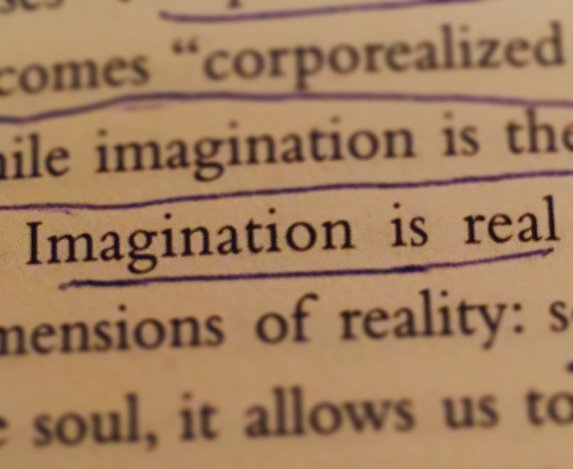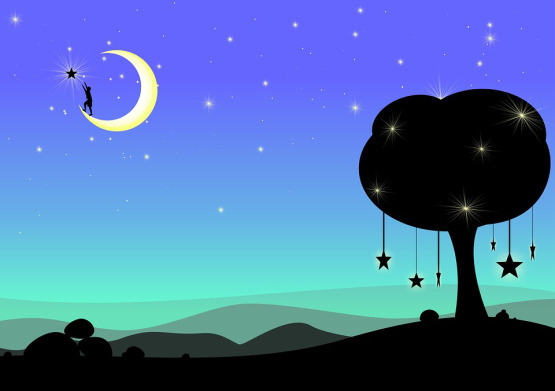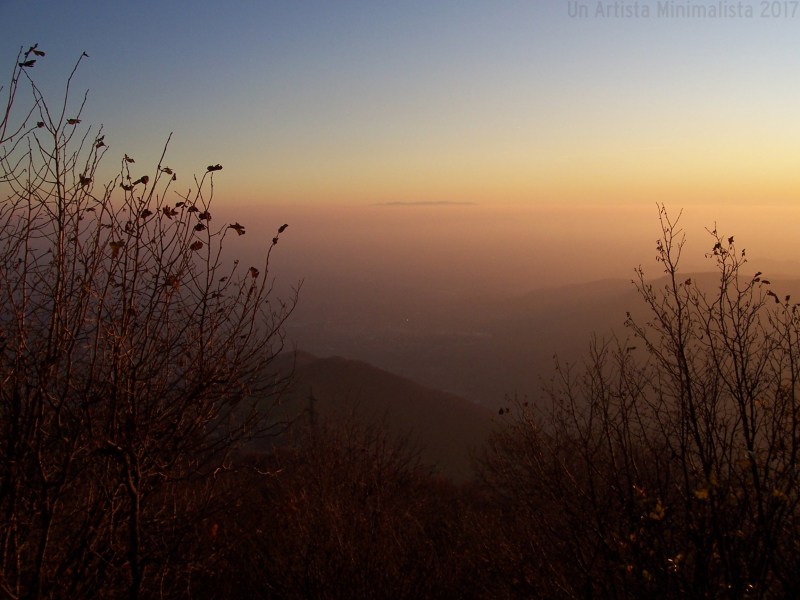In this complex and bizarre world, getting in touch with a trustworthy inner compass is both increasingly challenging and essential. One way that we can access that compass, our personal daimon—our inner creative urge, or guiding spirit that drives us toward purpose and who we really are (introduced in more depth here)—is through the imaginal world. This article will provide an introductory overview of the concept, which has relevance and applicability in not only connecting with our daimon, but for many other esoteric and even secular pursuits as well.
While imagination is commonly regarded in today’s rational materialist world as mere “child’s play,” for practitioners in many different esoteric traditions the imagination is a faculty that can be used to explore actual existing realms. Scholar of esotericism Henri Corbin called this the “mundus imaginalis,” or the “imaginal world.”[1] Corbin, whose work elucidates the visionary experiences of Suhrawardi, the twelfth century Iranian esotericist, stresses as he describes this visionary realm that this is “no utopia, but a real country and a real space…which has neither location nor climate in the world perceived by the outer senses.”[2]
 From The Secret Tradition of the Soul by Patrick Harpur
From The Secret Tradition of the Soul by Patrick Harpur
In discussing a recurrent theme in the work of Mullah Sadra Shirazi, Corbin highlights another key point: “that the Imagination is a spiritual faculty which does not perish along with the physical organism, because it is independent of it.”[3] This sheds particular light for us on the importance of the imaginal world for the Gnostics, whose ontological perspective regarded this material world as a “false” world; if this faculty exists independently of the physical world of matter, it would follow that it would be a key to transcending the world of matter. However, this exploration of the Gnostic perspective is one that I will leave for another time (in the meantime, the podcast Aeon Byte Gnostic Radio is a great resource on Gnosticism).
William Blake was another explorer of the imaginal world and advocate for the necessity of doing so in order to awaken. Kathleen Raine, a poet and scholar of Blake, helps elucidate why, for Blake, Corbin, and many others, a “world” which is invisible to the naked eye can nevertheless be more “real” than our ordinary world of matter: “We must remember at all times that a ‘world’ for Blake is situated not in Cartesian space but in consciousness; therefore every change of consciousness changes the world.”[4] She deals a further blow to the viewpoint that only the world of matter and the senses is worth experiencing when she writes, “By banishing the phenomena from the Imagination— the ‘faculty which experiences’ — they are emptied of all significance, retaining only a quantitative existence.”[5]
These two statements denote the way in which the Imagination opens the door to an entire world that is ontologically significant. First, we see how a “world” can be considered to exist outside of the realm of physical space: worlds exist within consciousness. Raine then drives home the significance of this statement by pointing out that every change of consciousness changes a world we experience. This highlights the importance of cultivating clarity of consciousness and developing the inner faculties to be able to experience the imaginal world—but also reminds us that we are not simply passive players within our “everyday” lives, but rather that we create that world and how we experience it depends on the state of our consciousness. This makes sense, given how vastly varied different people’s experiences of “the world” are.

Raine then goes on to say that the Imagination is the “faculty which experiences,” and that our Cartesian materialist/dualist worldview has actually rejected Imagination altogether. What this means is that we are actually stripped of our ability to experience. Raine and Blake would question whether a materialist who believes only in this visible world actually sees or experiences anything at all. These two ideas together reveal the hollowness of the materialist experience worldview, painting an image of a flat, two-dimensional skeletal world, contrasted with the vivid, colorful, 3D realm of the Imagination.
C.G. Jung and many depth psychologists teach a method of engaging with inner figures called “active imagination” which enables the practitioner to travel inward and explore the realm of the Imagination. Active imagination can be explored by choosing a figure such as a dream figure, or an inner voice or aspect of ourselves, and dialoguing with it through imagery and writing. We can specifically choose to enter into a dialogue with our personal daimon or other imaginal allies; Jungian analyst Jeffrey Raff offers great practical exercises on this in his book Ally Work. Likewise, the practice of shamanic journeying, as well as certain visualization practices across a variety of esoteric traditions, can be way of using the faculty of the Imagination to enter into realms unseen.
These methods offer the possibility of accessing worlds beyond the one made of matter that is most immediately accessible through the human sense faculties. Though not limited to personal daimon work, many of these techniques can be valuable for accessing our inner guides. The possibility of being able to access a world beyond the one we know through our senses also has significant societal implications. Particularly at a time when our world is in dire need of some serious re-imagining, being able to not only think outside the box but also literally conjure up something new using the power of our imaginal faculties may be our only hope in turning the proverbial ship around. Perhaps we can think of that as a bit of a “to be continued…”
____
[1] Corbin, H. (1998). The Voyage and the Messenger. (Berkeley, CA: North Atlantic Books). p. 125.
[2] Ibid.
[3] Ibid. p. 132.
[4] Raine, K. (1991). Golgonooza: City of Imagination. (Hudson, NY: Lindisfarne 1991). p. 18.
[5] Ibid. p. 19
Advertisements Share this:




